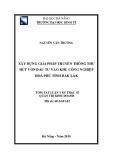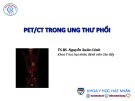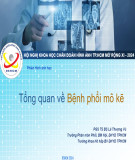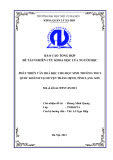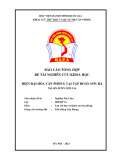
A comparative analysis of the transcriptome and signal
pathways in hepatic differentiation of human adipose
mesenchymal stem cells
Yusuke Yamamoto
1,2,
*, Agnieszka Banas
1,
*, Shigenori Murata
3
, Madoka Ishikawa
3
, Chun R. Lim
3
,
Takumi Teratani
1
, Izuho Hatada
4
, Kenichi Matsubara
3
, Takashi Kato
2
and Takahiro Ochiya
1,2
1 Section for Studies on Metastasis, National Cancer Center Research Institute, Tokyo, Japan
2 Graduate School of Science and Engineering, Waseda University, Tokyo, Japan
3 DNA Chip Research Inc., Yokohama, Japan
4 Laboratory of Genome Science, Biosignal Genome Resource Center, Department of Molecular and Cellular Biology, Gunma University,
Maebashi, Japan
Mesenchymal stem cells (MSCs) are the most promis-
ing candidates with respect to clinical applications in
regenerative medicine. MSCs were first isolated from
bone marrow cells by simple plating on plastic dishes
[1]. Further studies demonstrated evidence of their
presence in adipose tissue [2,3], scalp tissue [4], pla-
centa [5], amniotic fluid and umbilical cord blood [6],
as well as in various fetal tissues [7]. Importantly, these
stem cells can differentiate in vitro into multiple types
of cells, including chondrocytes, osteocytes, adipocytes
[8], myocytes [9], neurons [10] and hepatocytes,
depending on the appropriate stimuli and microenvi-
ronment. MSCs are promising candidates for liver
regeneration [11,12], because their usage might over-
come obstacles such as ethical concerns and the risks
of rejection in cell transplantation therapy.
Keywords
adipose tissue; gene ontology; hepatocyte
differentiation; mesenchymal stem cell;
microarray
Correspondence
T. Ochiya, Section for Studies on
Metastasis, National Cancer Center
Research Institute, 1-1 Tsukiji 5-chome,
Chuo-ku, Tokyo 104-0045, Japan
Fax: +81 3 3541 2685
Tel: +81 3 3542 2511(ext 4452)
E-mail: tochiya@ncc.go.jp
*These authors contributed equally to this
work
(Received 30 October 2007, revised 26
December 2007, accepted 10 January 2008)
doi:10.1111/j.1742-4658.2008.06287.x
The specific features of the plasticity of adult stem cells are largely
unknown. Recently, we demonstrated the hepatic differentiation of human
adipose tissue-derived mesenchymal stem cells (AT-MSCs). To identify the
genes responsible for hepatic differentiation, we examined the gene expres-
sion profiles of AT-MSC-derived hepatocytes (AT-MSC-Hepa) using
several microarray methods. The resulting sets of differentially expressed
genes (1639 clones) were comprehensively analyzed to identify the path-
ways expressed in AT-MSC-Hepa. Clustering analysis revealed a striking
similarity of gene clusters between AT-MSC-Hepa and the whole liver,
indicating that AT-MSC-Hepa were similar to liver with regard to gene
expression. Further analysis showed that enriched categories of genes and
signaling pathways such as complementary activation and the blood clot-
ting cascade in the AT-MSC-Hepa were relevant to liver-specific functions.
Notably, decreases in Twist and Snail expression indicated that mesenchy-
mal-to-epithelial transition occurred in the differentiation of AT-MSCs into
hepatocytes. Our data show a similarity between AT-MSC-Hepa and the
liver, suggesting that AT-MSCs are modulated by their environmental con-
ditions, and that AT-MSC-Hepa may be useful in basic studies of liver
function as well as in the development of stem cell-based therapy.
Abbreviations
ABC transporter, ATP binding cassette transporter; AT-MSC, adipose tissue-derived mesenchymal stem cells; AT-MSC-Hepa, AT-MSC-
derived hepatocytes; CYP, cytochrome P450; EMT, epithelial-to-mesencyhmal transition; ES, embryonic stem; FGF, fibroblast growth factor;
GO, gene ontology; HGF, hepatocyte growth factor; HIFC, hepatic induction factor cocktail; HNF, hepatocyte nuclear facor; LDL, low-density
lipoprotein; MDR, multi-drug resistance; MET, mesencyhmal-to-epithelial transition; MSCs, Mesenchymal stem cells; OsM, oncostatin M;
TDO2, tryptophan 2,3-dioxygenase.
1260 FEBS Journal 275 (2008) 1260–1273 ª2008 The Authors Journal compilation ª2008 FEBS





